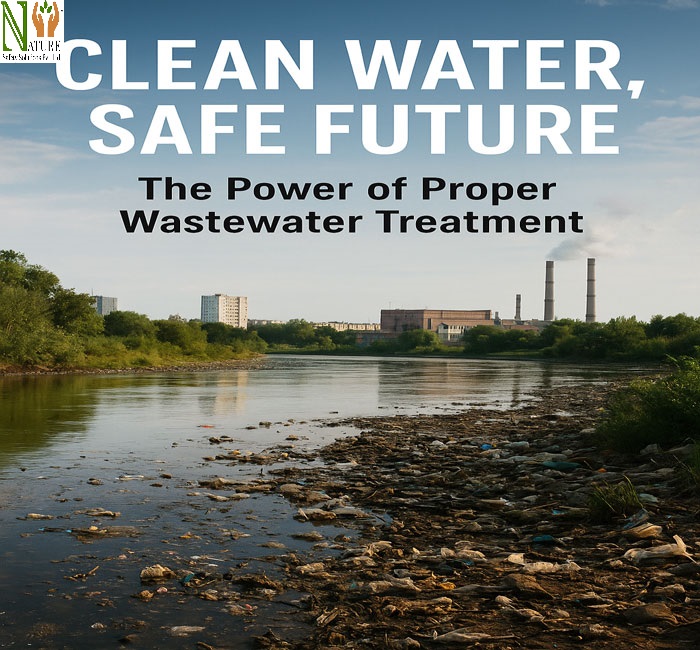Water is the major base of life. It keeps us alive, helps grow our food, runs our industries, and maintains the balance of nature. But this same water that enables our lives is under threat. Every single day there are millions of liters of wastewater being dumped into rivers and lakes with little or no treatment.
This contaminated water spreads disease, kills fish, and contaminates the soil. It is dire, but there is a silver lining. Wastewater can be adequately treated so that contaminated water can be cleaned and reused for the health of both people and their environment.

What is Wastewater?
Wastewater is water that has been used. Once water leaves one of the following sources: home, business, or farm, it collects waste and harmful material. For homes, waste water is everything that’s gone down either the sink, shower, or toilet. For businesses, wastewater can contain oils, dyes, metals, and hazardous chemicals.
And for farms, it is typically runoff with animal waste and fertilizers, pesticides, and herbicides. This water might look dirty but it can be much more dangerous and if it is not treated, that water can go on to cause sickness and disease, poison rivers, and destroy farmland. What looks like water quickly becomes a health and environmental hazard.
Treatment Explanation
Wastewater treatment serves to give dirty water a second life. Initially, objects like plastics and rags are removed, and the water is allowed to settle with heavy waste sinking and oil floating on top. Then microorganisms break down much upstream waste, providing cleaner water.
The last step is to disinfect the wastewater to get rid of harmful germs and chemicals using something like chlorine or ultraviolet light. When it is all done, the water is clean enough to go back to rivers or in some cases is reusable for agriculture or industry.
Why Treatment Matters
The benefits of wastewater treatment cannot be overstated. Wastewater unaddressed is likely to spread diseases like cholera, typhoid, and diarrhea. These diseases are especially dangerous for children, and thousands of children die each year around the world due to infected water. The environment is also negatively affected by pollution in rivers and lakes.
Fish and aquatic life cannot live in polluted water, and it takes decades for disrupted ecosystems to be restored after they are depleted. Clean water is important for farmers too, and treated wastewater is a safe, alternative source of irrigation water.
Along with providing health benefits and safe water, treatment helps support economies by protecting agriculture, fishing, and tourism. In sum, wastewater treatment does not merely clean water; it protects life, protects livelihoods, and protects the future.
A Global Challenge
Even though it is critical in importance, much of the wastewater in the world is still untreated. According to the United Nations, over 80 percent of wastewater worldwide is released directly into the environment. There are many reasons why this happens. Some countries simply do not have the money or the built infrastructure to build treatment plants. In other cases, firms don’t treat their waste to save money.
Rapid urban development also contributes to the issue because cities can often produce more water than they can handle. The result is rivers are so polluted they cannot sustain life. Even in the best of the past, rivers like the Yamuna in India, or the Citarum in Indonesia, provided drinking quality water to support a community, and have now become a health threat instead.
Signs of Hope
Despite the scale of the challenge, there are real examples of success that demonstrate what is achievable. Singapore, for instance, has developed sophisticated systems to recycle wastewater into a product called “NEWater.” It is so clean that it can also be consumed. Israel has reused close to 90% of its sewage, mostly for agricultural production, allowing for farming to occur in some of the driest areas of the world.
In the UK, the River Thames was once deemed biologically dead, but through years of treatment and enforcement of strict laws on sewage discharge, it is again home to fish, birds, and seals. These examples illustrate that, given time, energy, planning, and dedication, waterways can be restored and water demands can be addressed.
The way forward
To ensure wastewater treatment occurs everywhere, the participation of governments, industries, communities, and individuals is needed. Governments build treatment facilities, enforce pollution laws, and protect communities. Industries must be responsible to have their waste treated prior to discharge.
Communities demand stewardship and support initiatives to safeguard water. Individuals can save water, limit chemical waste in their homes and raise awareness to others. No one action will be enough to solve the problem, but collectively these actions will create lasting change.
Also read:-
